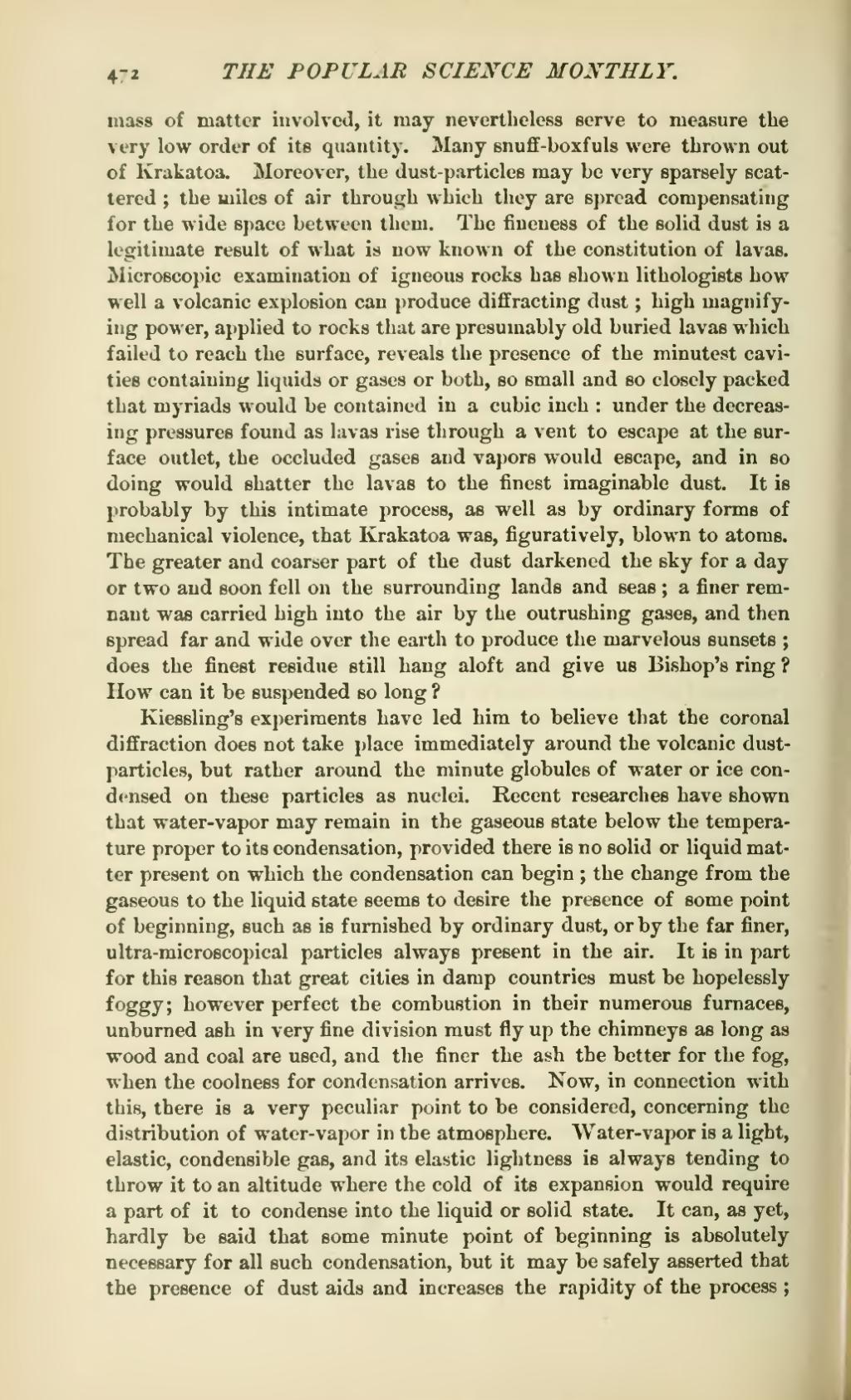mass of matter involved, it may nevertheless serve to measure the very low order of its quantity. Many snuff-boxfuls were thrown out of Krakatoa. Moreover, the dust-particles may be very sparsely scattered; the miles of air through which they are spread compensating for the wide space between them. The fineness of the solid dust is a legitimate result of what is now known of the constitution of lavas. Microscopic examination of igneous rocks has shown lithologists how well a volcanic explosion can produce diffracting dust; high magnifying power, applied to rocks that are presumably old buried lavas which failed to reach the surface, reveals the presence of the minutest cavities containing liquids or gases or both, so small and so closely packed that myriads would be contained in a cubic inch: under the decreasing pressures found as lavas rise through a vent to escape at the surface outlet, the occluded gases and vapors would escape, and in so doing would shatter the lavas to the finest imaginable dust. It is probably by this intimate process, as well as by ordinary forms of mechanical violence, that Krakatoa was, figuratively, blown to atoms. The greater and coarser part of the dust darkened the sky for a day or two and soon fell on the surrounding lands and seas; a finer remnant was carried high into the air by the outrushing gases, and then spread far and wide over the earth to produce the marvelous sunsets; does the finest residue still hang aloft and give us Bishop's ring? How can it be suspended so long?
Kiessling's experiments have led him to believe that the coronal diffraction does not take place immediately around the volcanic dust-particles, but rather around the minute globules of water or ice condensed on these particles as nuclei. Recent researches have shown that water-vapor may remain in the gaseous state below the temperature proper to its condensation, provided there is no solid or liquid matter present on which the condensation can begin; the change from the gaseous to the liquid state seems to desire the presence of some point of beginning, such as is furnished by ordinary dust, or by the far finer, ultra-microscopical particles always present in the air. It is in part for this reason that great cities in damp countries must be hopelessly foggy; however perfect the combustion in their numerous furnaces, unburned ash in very fine division must fly up the chimneys as long as wood and coal are used, and the finer the ash the better for the fog, when the coolness for condensation arrives. Now, in connection with this, there is a very peculiar point to be considered, concerning the distribution of water-vapor in the atmosphere. Water-vapor is a light, elastic, condensible gas, and its elastic lightness is always tending to throw it to an altitude where the cold of its expansion would require a part of it to condense into the liquid or solid state. It can, as yet, hardly be said that some minute point of beginning is absolutely necessary for all such condensation, but it may be safely asserted that the presence of dust aids and increases the rapidity of the process;
